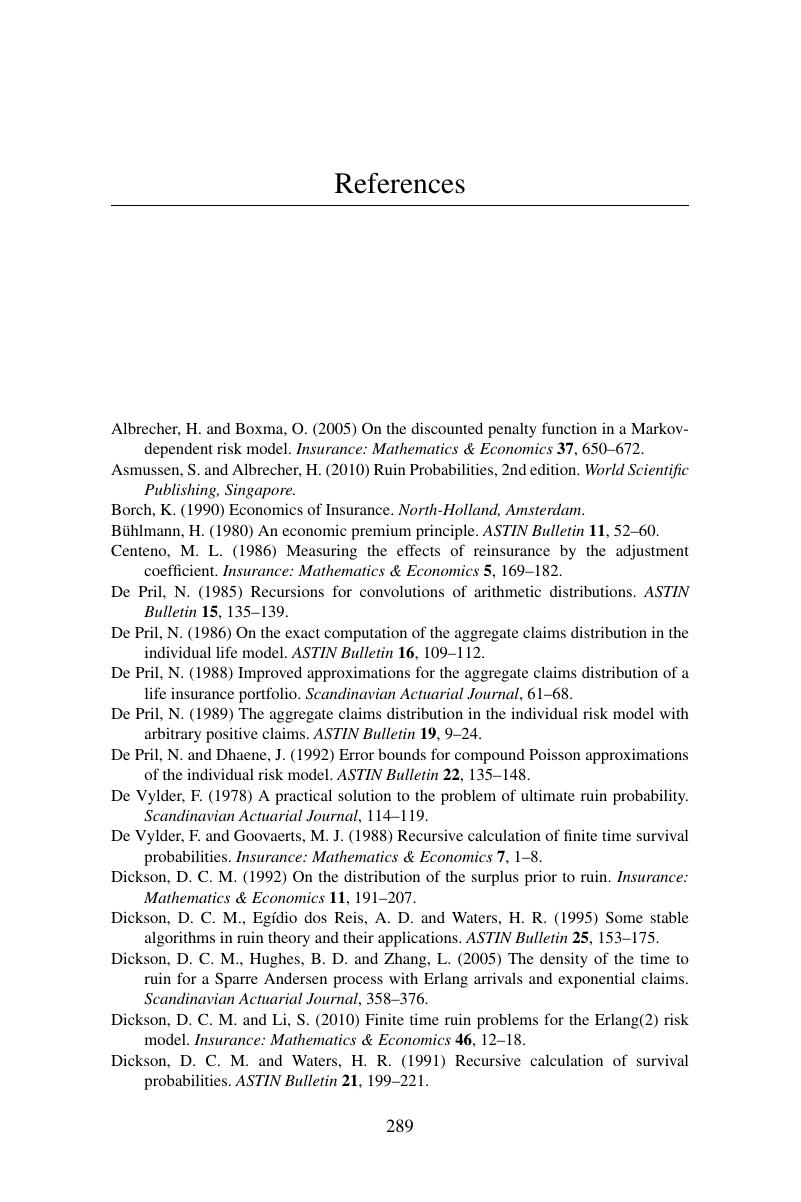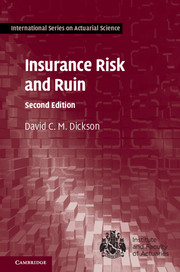Book contents
- Frontmatter
- Dedication
- Contents
- Preface
- 1 Probability Distributions and Insurance Applications
- 2 Utility Theory
- 3 Principles of Premium Calculation
- 4 The Collective Risk Model
- 5 The Individual Risk Model
- 6 Introduction to Ruin Theory
- 7 Classical Ruin Theory
- 8 Advanced Ruin Theory
- 9 Reinsurance
- Appendix
- Solutions to Exercises
- References
- Index
- References
References
Published online by Cambridge University Press: 17 November 2016
- Frontmatter
- Dedication
- Contents
- Preface
- 1 Probability Distributions and Insurance Applications
- 2 Utility Theory
- 3 Principles of Premium Calculation
- 4 The Collective Risk Model
- 5 The Individual Risk Model
- 6 Introduction to Ruin Theory
- 7 Classical Ruin Theory
- 8 Advanced Ruin Theory
- 9 Reinsurance
- Appendix
- Solutions to Exercises
- References
- Index
- References
Summary

- Type
- Chapter
- Information
- Insurance Risk and Ruin , pp. 289 - 291Publisher: Cambridge University PressPrint publication year: 2016



